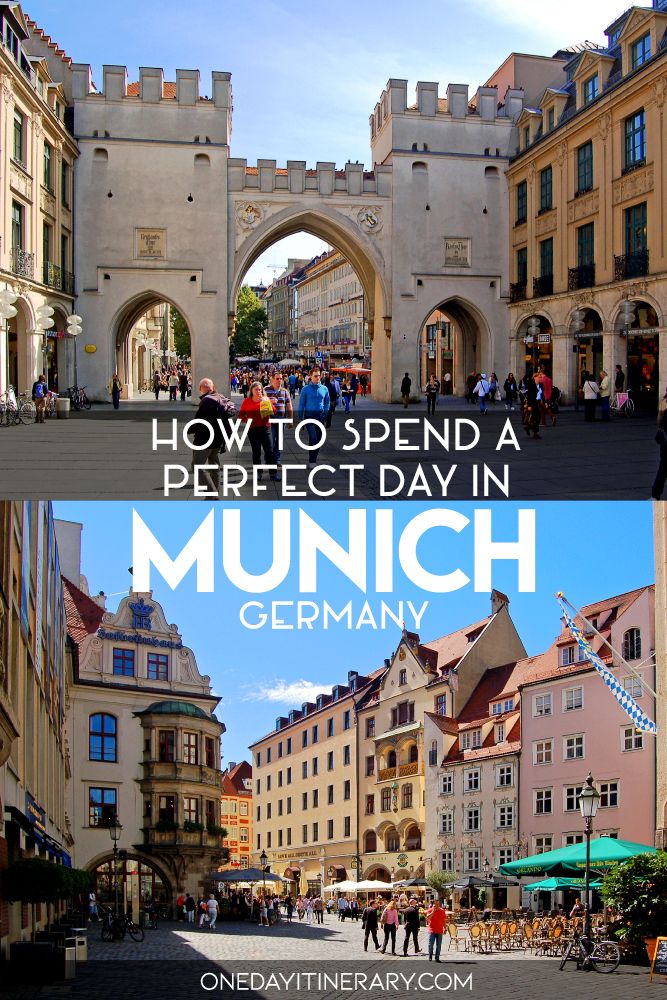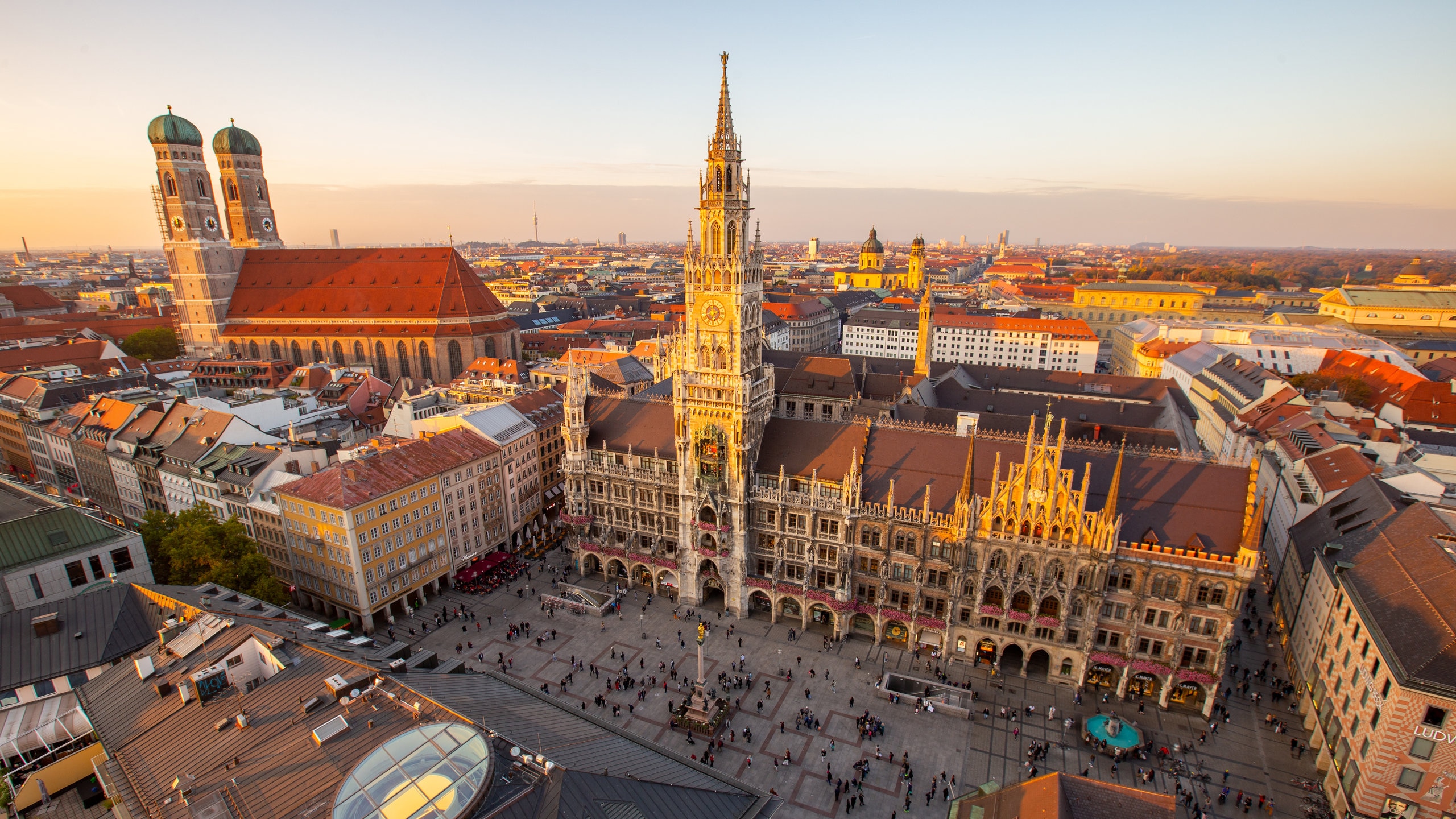
Nestled at the foot of the Alps, Munich (or München in German) is a city of captivating contrasts. It’s where lederhosen and laptops coexist, where centuries-old beer halls stand beside avant-garde art galleries, and where a deep-rooted Bavarian tradition gracefully embraces a forward-thinking, cosmopolitan spirit. More than just the home of Oktoberfest, Munich is a city of art, culture, history, and an infectious Gemütlichkeit—a unique German word for a state of warmth, friendliness, and good cheer. This guide will take you through the cobblestone streets and grand boulevards of Bavaria’s magnificent capital.
A Glimpse into Munich’s Storied Past
To truly appreciate Munich, one must understand its rich and complex history. Founded in 1158 by Henry the Lion, Duke of Saxony and Bavaria, the city’s origins are tied to a monastery and a crucial salt trade route. The city’s fortunes, however, were truly shaped by the Wittelsbach dynasty, who ruled Bavaria from 1180 until 1918. Their ambition and patronage transformed Munich into a cultural and political powerhouse, leaving behind an astonishing legacy of opulent palaces, magnificent churches, and world-class art collections.
Related Articles about Munich Unveiled: A Comprehensive Travel Guide to Bavaria’s Heart:
- Cambodia: A Tapestry of Ancient Wonders, Resilient Spirit, and Culinary Delights
- Discovering Denmark: A Comprehensive Travel Guide
- Los Angeles: Where Dreams Check In – A Guide to the City’s Top Hotels and Beyond
- Myanmar: A Journey Through Time, Culture, and Unforgettable Landscapes
- Aloha Spirit: Unveiling the Enchanting Tourist Attractions of Hawaii
The 20th century cast a dark shadow over the city. Munich became the "Capital of the Movement" for Adolf Hitler and the Nazi Party, where the infamous Beer Hall Putsch of 1923 took place. The city suffered extensive damage from Allied bombing during World War II. Yet, from these ashes, Munich meticulously rebuilt and reinvented itself. The 1972 Summer Olympics symbolized its rebirth on the world stage, showcasing a modern, democratic, and vibrant city that had risen from its difficult past. Today, Munich stands as a testament to resilience, a city that honestly confronts its history while celebrating a bright and prosperous present.
Must-See Attractions: The Jewels of Munich
Munich’s cityscape is a treasure trove of architectural wonders, sprawling parks, and cultural institutions. The best way to explore is to start from its historic heart and radiate outwards.
The Altstadt (Old Town)
At the very center of it all is Marienplatz, Munich’s main square since its founding. Dominated by the magnificent neo-Gothic Neues Rathaus (New Town Hall), the square is a constant hub of activity. Be sure to time your visit for 11 a.m. or 12 p.m. (and 5 p.m. in summer) to witness the Glockenspiel. This ornate carillon re-enacts historical Bavarian events with 32 life-sized figures, a delightful spectacle that charms crowds daily. Nearby, the more modest Altes Rathaus (Old Town Hall) houses a toy museum.
A short walk from Marienplatz leads to the Frauenkirche (Cathedral of Our Blessed Lady). Its iconic twin onion domes are a symbol of the city, and a local ordinance actually forbids any new building in the city center from exceeding their height (99 meters). Step inside to see the legendary Teufelstritt or "Devil’s Footprint," a black mark on the floor said to have been left by the devil himself. For an unparalleled view of the city and the Alps on a clear day, climb the tower of St. Peter’s Church, Munich’s oldest parish church.
Palaces and Royal Splendor
The Munich Residenz, the former royal palace of the Wittelsbach monarchs, is a sprawling complex of buildings that showcases centuries of architectural styles. Spend hours exploring its 130 rooms, including the breathtaking Antiquarium, a Renaissance hall filled with antique sculptures, and the opulent Cuvilliés Theatre, a Rococo masterpiece. Don’t miss the Schatzkammer (Treasury), which holds a dazzling collection of Bavarian crown jewels.
For a taste of summer royalty, take a tram to Schloss Nymphenburg. This sprawling Baroque palace served as the summer residence of Bavarian electors and kings. The "Hall of Beauties," with its portraits of 36 beautiful noblewomen, is a highlight. The true magic of Nymphenburg, however, lies in its vast park, a perfect blend of formal French gardens and English-style landscapes, dotted with charming pavilions and waterways.
Gardens and Green Spaces
Munich is one of Europe’s greenest cities, and the Englischer Garten (English Garden) is its crowning glory. Larger than New York’s Central Park, it’s a beloved urban oasis. Here, you can watch surfers ride a man-made wave on the Eisbach river, rent a paddleboat on the Kleinhesseloher See, or simply relax under the shade of a chestnut tree. A visit isn’t complete without a stop at the Chinesischer Turm (Chinese Tower) beer garden, one of the city’s most famous.
World-Class Museums
Munich’s Kunstareal (Art District) is a paradise for art lovers. It’s home to a trio of remarkable galleries:
- Alte Pinakothek: Houses an exceptional collection of Old Master paintings from the 14th to 18th centuries, featuring works by Dürer, Rubens, and Rembrandt.
- Neue Pinakothek: Focuses on 19th-century European art, with masterpieces by Monet, van Gogh, and Klimt.
- Pinakothek der Moderne: A four-in-one museum dedicated to modern art, graphics, architecture, and design.
For science and technology enthusiasts, the Deutsches Museum is an absolute must. Situated on an island in the Isar River, it’s one of the oldest and largest science museums in the world, with interactive exhibits covering everything from aerospace to nanotechnology.
Savouring Bavaria: What to Eat and Drink
Bavarian cuisine is hearty, traditional, and delicious. It’s a celebration of simple, high-quality ingredients, best enjoyed in a bustling beer hall or a shady beer garden.
The Beer Culture: Beer is not just a drink in Munich; it’s a way of life, governed by the Reinheitsgebot (Purity Law) of 1516. The city is home to the "Big Six" breweries: Augustiner, Hacker-Pschorr, Hofbräu, Löwenbräu, Paulaner, and Spaten. The best way to experience this culture is in a Biergarten (beer garden), where locals gather at long wooden tables to enjoy a liter-sized mug of beer, known as a Maß.
Must-Try Dishes:
- Weißwurst: A traditional white sausage made from minced veal and pork back bacon. It’s typically eaten before noon with sweet mustard, a fresh pretzel (Brezn), and a Weissbier.
- Schweinshaxe: A massive, slow-roasted pork knuckle with a crispy crackling skin, usually served with a potato dumpling (Knödel) and gravy.
- Schnitzel: While Austrian in origin, the Wiener Schnitzel (breaded veal cutlet) is a staple on every Munich menu.
- Käsespätzle: A comforting dish of soft egg noodles mixed with grated cheese and topped with fried onions.
- Apfelstrudel: A classic dessert of thin pastry filled with spiced apples, raisins, and cinnamon, often served warm with vanilla sauce.
For an authentic culinary experience, visit the Viktualienmarkt, a daily outdoor food market just off Marienplatz. Here you can sample local cheeses, sausages, honey, and grab a quick and delicious lunch.
Planning Your Trip
Best Time to Visit:
- Spring (April-May): The weather is pleasant, the chestnut trees in the beer gardens are in full bloom, and you can experience Frühlingsfest (Spring Festival), a smaller version of Oktoberfest.
- Summer (June-August): This is peak season. The weather is warm and sunny, perfect for enjoying the parks and beer gardens. Expect larger crowds and higher prices.
- Autumn (September-October): The main event is Oktoberfest, which runs from mid-September to the first Sunday in October. It’s an unforgettable experience but requires booking accommodation and festival tents far in advance. The rest of autumn offers beautiful foliage and fewer crowds.
- Winter (November-December): The city is transformed into a winter wonderland by its enchanting Christkindlmärkte (Christmas Markets), with Marienplatz hosting the most famous one.
Where to Stay:
- Luxury: For unparalleled service and prime locations, consider the historic Bayerischer Hof or the elegant Mandarin Oriental, Munich.
- Mid-Range: Hotel Torbräu, Munich’s oldest hotel, offers historic charm and modern comfort near the Isartor. The Motel One chain provides stylish, affordable rooms in several convenient locations.
- Budget: Hostels like Wombat’s City Hostel and the Euro Youth Hotel near the main train station (Hauptbahnhof) are excellent choices for backpackers and budget-conscious travelers.
Navigating the City: Transportation Options
Munich boasts one of Europe’s most efficient public transportation systems, the MVV. It consists of the U-Bahn (subway), S-Bahn (suburban trains), trams, and buses, all integrated into a single ticket system. The best value for tourists is a day ticket (Tageskarte) or a group day ticket. Remember to validate your ticket in the blue stamping machines before your first journey.
The city center is very walkable, and exploring on foot is one of the best ways to discover its hidden courtyards and charming alleys. Munich is also an incredibly bike-friendly city, with an extensive network of dedicated bike lanes. Renting a bike is a fantastic way to explore areas like the Englischer Garten.
Munich Airport (MUC) is located about 45 minutes from the city center and is connected by two S-Bahn lines, the S1 and S8, which run every 10-20 minutes.
Essential Travel Tips
- Cash is Useful: While credit cards are widely accepted, it’s always wise to have some cash on hand, especially for smaller cafes, markets, and some beer gardens.
- Sundays are Quiet: Be aware that most shops and supermarkets are closed on Sundays. Plan your shopping accordingly. Restaurants and museums remain open.
- Learn a Little German: While most people in the tourism industry speak English, a few German phrases will be appreciated. Guten Tag (Good day), Danke (Thank you), and Prost! (Cheers!) are a great start.
- Tipping Culture: Tipping is customary but not obligatory. A common practice is to round up the bill or add a 5-10% tip for good service.
Conclusion
Munich is a city that effortlessly captures the heart. It is a place where history is not confined to museums but is alive in the streets, where the joy of life is celebrated with every clink of a beer mug, and where the majestic Alps provide a constant, breathtaking backdrop. Whether you come for the art, the history, the beer, or the sheer beauty of it all, Munich will welcome you with open arms and leave you with memories to last a lifetime. Prost!








